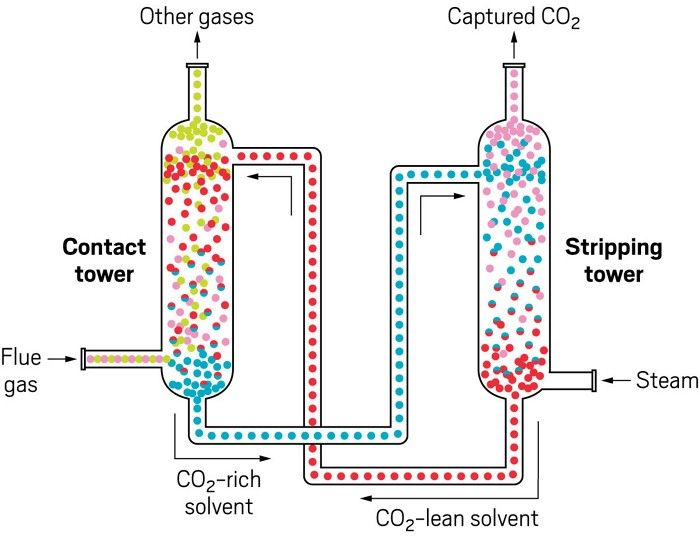A 30-Second Intro to Industrial Carbon Capture

Photo Credit: Adapted from CO2CRC
Industrial carbon capture technology captures CO2 from industrial processes, such as power generation, boilers, cement manufacturing, or chemical production.
The captured CO2 is compressed and transported to a storage site, where it can be stored underground, in depleted oil and gas reservoirs, or in deep saline aquifers. Alternatively it is converted to a useful product such as calcium carbonate, biochar, vegetable propagation accelerants, zero carbon fuels, etc.
There are two main types of industrial carbon capture technology: post-combustion and pre-combustion:
Post-combustion carbon capture is the most common method and is used to capture CO2 from the exhaust gases of power plants and other industrial processes after the fuel has been burned. Typically this is done with an amine-based chemical process (pictured below), but other technology is emerging focused on physical, biological, or other forms of separation.
Pre-combustion carbon capture describes the process of removing the carbon from the fuel prior to combustion. This includes using renewable natural gas and hydrogen as an alternative fuel.



